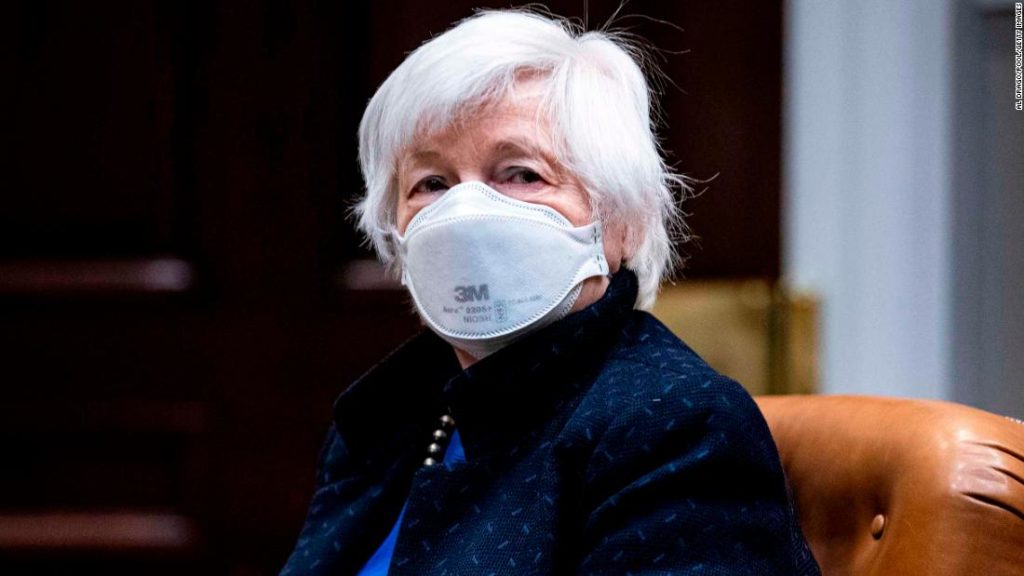The details: At an event hosted by The Atlantic, Yellen, an economist who previously led the Federal Reserve, indicated that the central bank may need to hike interest rates to prevent prices from rising too quickly.
“It may be that interest rates will have to rise somewhat to make sure that our economy doesn’t overheat,” Yellen said.
Her comments rippled through markets, feeding a selloff in tech stocks that could take a beating when rates rise. She later clarified that she wasn’t predicting or making any recommendations to the Fed, whose independence she respects, and does not expect inflation to be a persistent, major issue.
“I don’t think there’s going to be an inflationary problem, but if there is, the Fed can be counted on to address [it],” Yellen said later Tuesday at The Wall Street Journal’s CEO Council Summit.
“Markets were unhappy at this statement of the blindingly obvious,” said Paul Donovan, chief economist of UBS Global Wealth Management. “Rates will clearly rise in the future.”
But investors remain on edge about when, exactly, that will happen — especially with valuations of assets like stocks looking extremely rich and vulnerable to a pullback.
Most Federal Reserve officials think the central bank won’t move away from super-low interest rates until after 2023. At the same time, signs of price pressures in different parts of the economy are growing.
Meanwhile, the price of commodities is climbing, with the Bloomberg Commodity Spot Index, which tracks 23 raw materials, hitting its highest level since 2011.
“The current electronics/semiconductor shortage is having tremendous impacts on lead times and pricing,” one respondent said. “Additionally, there appears to be a general inflation of prices across most, if not all, supply lines.”
Big picture: Whether investors want it to or not, post-Covid inflation has arrived. What matters is whether higher prices are transient, as Yellen forecasts, or turn out to have staying power.
Wall Street is ready to end the era of Zoom meetings
Fed up with remote work, Wall Street’s bosses are preparing to bring employees back to the office on a large scale — moves that could reinvigorate the US financial center after more than a year of pandemic life.
“We are focused on progressing on our journey to gradually bring our people back together again, where it is safe to do so, and are now in a position to activate the next steps in our return to office strategy,” CEO David Solomon, President John Waldron and CFO Stephen Scherr wrote.
The executives said they “continue to be encouraged by the rollout of vaccines” in many areas and the “effectiveness of the health and safety protocols we have put in place.”
Last week, the bank announced it will open its US offices to all employees on May 17, subject to a 50% occupancy cap.
“We want people back at work and my view is some time in September, October, it will look just like it did before,” Dimon said. “Yes, people don’t like commuting, but so what?”
That said: Some fixtures of the pre-pandemic financial world aren’t ever coming back. CME Group announced Tuesday that it won’t reopen physical trading pits that were closed in Chicago last March due to Covid-19.
Once iconic hubs for trading commodities like soybeans, such locations have been made superfluous by electronic trading — and after staying empty for many months, they may be on their way out for good.
Ethereum’s 27-year-old creator is now a billionaire
Buterin holds about 333,500 ether in his public wallet, my CNN Business colleague Alexis Benveniste reports. Multiply that by the $3,500 record high it hit on Tuesday, and you get more than $1.1 billion. Not bad.
What we know: Buterin co-founded Bitcoin Magazine, a publication that covers bitcoin and other cryptocurrencies, in 2012. In 2014, he was selected to be part of the Thiel Fellowship, a two-year program created by billionaire Peter Thiel that “gives $100,000 to young people who want to build new things instead of sitting in a classroom.”
But Buterin keeps a fairly low profile. He isn’t super active on social media — even though he boasts 1.4 million Twitter followers.
Big picture: Ethereum is down from recent highs on Wednesday, but is still trading at more than $3,300. It’s surged more than 350% since the start of 2021.
Part of the digital coin’s success can be credited to the fact that it’s the cryptocurrency of choice for purchasing many non-fungible tokens, or NFTs — digital artwork and other collectibles that are transformed into one-of-a-kind, verifiable assets that are easy to trade on the blockchain. But questions remain about whether NFTs are a game changer, or just a passing fad.
Up next
Also today:
- The ADP private employment report for April arrives at 8:15 a.m. ET.
- The ISM Non-Manufacturing Index, an important read of the US services sector, follows at 10 a.m. ET.
You may also like
-
Afghanistan: Civilian casualties hit record high amid US withdrawal, UN says
-
How Taiwan is trying to defend against a cyber ‘World War III’
-
Pandemic travel news this week: Quarantine escapes and airplane disguises
-
Why would anyone trust Brexit Britain again?
-
Black fungus: A second crisis is killing survivors of India’s worst Covid wave

